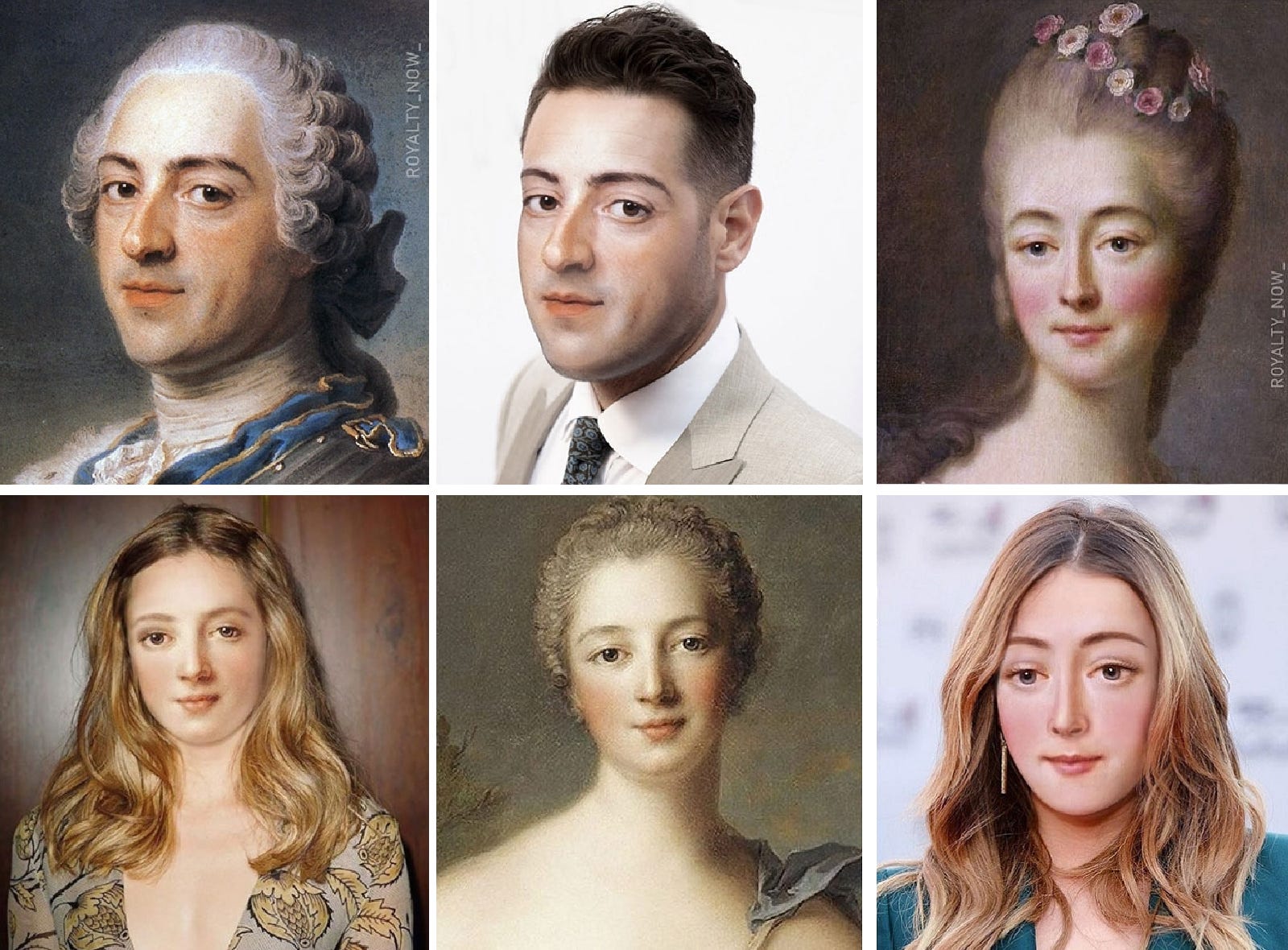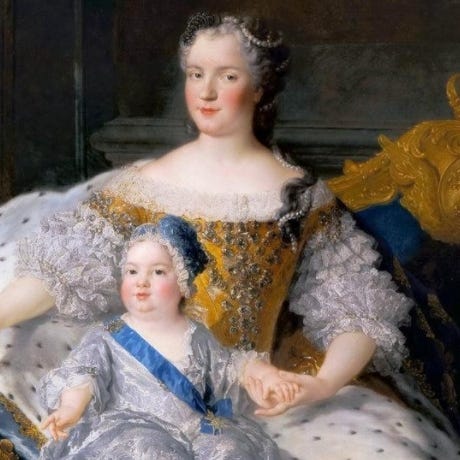
How Many of the 100 Most Famous Passages in Literature Can You Identify?
Winner Gets a Prize*
If you’re here, you’re probably pretty well read. Congratulations you! Still, it’s one thing to read a great book, but quite another to retain it. Especially considering most of us read a number of the classics in our teenage years, when we were only half paying attention anyway. And it’s one thing to know that Shakespeare wrote something (as the sages say: when in doubt, it’s from Shakespeare), but quite another to remember the play it came from.
So to test our collective memories (and libraries), and to break up the pandemic tedium with a little bit of competition, and also because it’s fun, I’ve picked out 100 of the most referenced, quoted, reused, and generally well-known passages of literature, from single memorable lines of dialogue to longer sections of prose or verse, and turned them into a quiz. To guide my selections, I looked at what seemed like an endless stream of quote pages and lists, including Lit Hub’s own list of the most iconic poems in the English language, keeping track of the popularity of various quotes. (I also just used my judgement; I’ve been doing this for a while.) I limited myself to one passage per distinct work, though some authors are quoted more than once. Some should be pretty obvious, but I also think a few will be a challenge—so if you think you’re equal to it, step right up and test your skills!
Highlight or double-click the space after Answer: to see if you were right, and share your score in the comments if you dare.
1.
It was the best of times, it was the worst of times, it was the age of wisdom, it was the age of foolishness, it was the epoch of belief, it was the epoch of incredulity, it was the season of Light, it was the season of Darkness, it was the spring of hope, it was the winter of despair.
Answer: Charles Dickens, A Tale of Two Cities
2.
Two roads diverged in a wood, and I—
I took the one less traveled by,
And that has made all the difference.
Answer: Robert Frost, “The Road Not Taken”
3.
It is a truth universally acknowledged, that a single man in possession of a good fortune, must be in want of a wife.
Answer: Jane Austen, Pride and Prejudice
4.
Because I could not stop for Death –
He kindly stopped for me –
The Carriage held but just Ourselves –
And Immortality.
Answer: Emily Dickinson, “Because I could not stop for Death – (479)”
5.
Don’t ever tell anybody anything. If you do, you start missing everybody.
Answer: J.D. Salinger, The Catcher in the Rye
6.
…and Gibraltar as a girl where I was a Flower of the mountain yes when I put the rose in my hair like the Andalusian girls used or shall I wear a red yes and how he kissed me under the Moorish wall and I thought well as well him as another and then I asked him with my eyes to ask again yes and then he asked me would I yes to say yes my mountain flower and first I put my arms around him yes and drew him down to me so he could feel my breasts all perfume yes and his heart was going like mad and yes I said yes I will Yes.
Answer: James Joyce, Ulyssses
7.
Happy families are all alike; every unhappy family is unhappy in its own way.
Answer: Leo Tolstoy, Anna Karenina
8.
As Gregor Samsa awoke one morning from uneasy dreams he found himself transformed in his bed into a gigantic insect.
Answer: Franz Kafka, “The Metamorphosis”
9.
The only people for me are the mad ones, the ones who are mad to live, mad to talk, mad to be saved, desirous of everything at the same time, the ones who never yawn or say a commonplace thing, but burn, burn, burn like fabulous yellow roman candles exploding like spiders across the stars.
Answer: Jack Kerouac, On The Road
10.
I took a deep breath and listened to the old brag of my heart. I am, I am, I am.
Answer: Sylvia Plath, The Bell Jar
11.
This is the way the world ends
This is the way the world ends
This is the way the world ends
Not with a bang but a whimper
Answer: T.S. Eliot, “The Hollow Men”
12.
Mother died today. Or, maybe, yesterday; I can’t be sure.
Answer: Albert Camus, The Stranger
13.
. . . this is how to make a good medicine for a cold; this is how to make a good medicine to throw away a child before it even becomes a child; this is how to catch a fish; this is how to throw back a fish you don’t like, and that way something bad won’t fall on you; this is how to bully a man; this is how a man bullies you; this is how to love a man; and if this doesn’t work there are other ways, and if they don’t work don’t feel too bad about giving up; this is how to spit up in the air if you feel like it, and this is how to move quick so that it doesn’t fall on you; this is how to make ends meet; always squeeze bread to make sure it’s fresh; but what if the baker won’t let me feel the bread?; you mean to say that after all you are really going to be the kind of woman who the baker won’t let near the bread?
Answer: Jamaica Kincaid, “Girl”
14.
I have eaten
the plums
that were in
the icebox
and which
you were probably
saving
for breakfast
Forgive me
they were delicious
so sweet
and so cold
Answer: William Carlos Williams, “This is Just to Say”
15.
Mrs. Dalloway said she would buy the flowers herself.
Answer: Virginia Woolf, Mrs. Dalloway
16.
The most beautiful things in the world cannot be seen or touched, they are felt with the heart.
Answer: Antoine de Saint-Exupéry, The Little Prince
17.
A heart is not judged by how much you love; but by how much you are loved by others.
Answer: L. Frank Baum, The Wonderful Wizard of Oz
18.
Why, sometimes I’ve believed as many as six impossible things before breakfast.
Answer: Lewis Carroll, Alice’s Adventures in Wonderland
19.
We are all in the gutter, but some of us are looking at the stars.
Answer: Oscar Wilde, Lady Windermere’s Fan
20.
I must not fear. Fear is the mind-killer. Fear is the little-death that brings total obliteration. I will face my fear. I will permit it to pass over me and through me. And when it has gone past I will turn the inner eye to see its path. Where the fear has gone there will be nothing. Only I will remain.
Answer: Frank Herbert, Dune
21.
Nolite te bastardes carborundorum.
Answer: Margaret Atwood, The Handmaid’s Tale
22.
There is no greater agony than bearing an untold story inside you.
Answer: Maya Angelou, I Know Why the Caged Bird Sings
23.
All the world’s a stage,
And all the men and women merely players:
They have their exits and their entrances;
And one man in his time plays many parts.
Answer: William Shakespeare, As You Like It
24.
Call me Ishmael.
Answer: Herman Melville, Moby-Dick
25.
Do not go gentle into that good night,
Old age should burn and rave at close of day;
Rage, rage, against the dying of the light.
Answer: Dylan Thomas, “Do not go gentle into that good night”
26.
And so we beat on, boats against the current, borne back ceaselessly into the past.
Answer: F. Scott Fitzgerald, The Great Gatsby
27.
They fuck you up, your mum and dad.
They may not mean to, but they do.
They fill you with the faults they had
And add some extra, just for you.
Answer: Philip Larkin, “This Be the Verse”
28.
I celebrate myself, and sing myself,
And what I assume you shall assume,
For every atom belonging to me as good belongs to you.
Answer: Walt Whitman, “Song of Myself”
29.
To be, or not to be: that is the question:
Whether ’tis nobler in the mind to suffer
The slings and arrows of outrageous fortune,
Or to take arms against a sea of troubles,
And by opposing end them. To die: to sleep…”
Answer: William Shakespeare, Hamlet
30:
I wanted you to see what real courage is, instead of getting the idea that courage is a man with a gun in his hand. It’s when you know you’re licked before you begin, but you begin anyway and see it through no matter what.
Answer: Harper Lee, To Kill a Mockingbird
31:
Tyger Tyger, burning bright,
In the forests of the night;
What immortal hand or eye,
Could frame thy fearful symmetry?
Answer: William Blake, “The Tyger”
32:
She had waited all her life for something, and it had killed her when it found her.
Answer: Zora Neale Hurston, Their Eyes Were Watching God
33:
Turning and turning in the widening gyre
The falcon cannot hear the falconer;
Things fall apart; the centre cannot hold;
Mere anarchy is loosed upon the world,
The blood-dimmed tide is loosed, and everywhere
The ceremony of innocence is drowned;
The best lack all conviction, while the worst
Are full of passionate intensity.
Answer: William Butler Yeats, “The Second Coming”
34:
There is nothing like looking, if you want to find something. You certainly usually find something, if you look, but it is not always quite the something you were after.
Answer: J.R.R. Tolkien, The Hobbit
35:
I am not afraid of storms, for I am learning how to sail my ship.
Answer: Louisa May Alcott, Little Women
36:
Last night I dreamt I went to Manderley again.
Answer: Daphne du Maurier, Rebecca
37:
It does not do to dwell on dreams and forget to live.
Answer: J.K. Rowling, Harry Potter and the Sorcerer’s Stone
38:
It is nothing to die; it is dreadful not to live.
Answer: Victor Hugo, Les Misérables
39:
In Xanadu did Kubla Khan
A stately pleasure-dome decree:
Where Alph, the sacred river, ran
Through caverns measureless to man
Down to a sunless sea.
Answer: Samuel Taylor Coleridge, “Kubla Khan”
40:
Not all those who wander are lost.
Answer: J.R.R. Tolkien, The Lord of the Rings
41:
The past is never dead. In fact, it’s not even past.
Answer: William Faulkner, Requiem for a Nun
42:
Stay gold, Ponyboy, stay gold.
Answer: S. E. Hinton, The Outsiders
43:
Hello babies. Welcome to Earth. It’s hot in the summer and cold in the winter. It’s round and wet and crowded. On the outside, babies, you’ve got a hundred years here. There’s only one rule that I know of, babies: “God damn it, you’ve got to be kind.”
Answer: Kurt Vonnegut, God Bless You, Mr. Rosewater
44:
Candy
Is dandy
But liquor
Is quicker
Answer: Ogden Nash, “Reflections on Ice-Breaking”
45:
It was love at first sight, at last sight, at ever and ever sight.
Answer: Vladimir Nabokov, Lolita
46:
‘Tis better to have loved and lost
Than never to have loved at all.
Answer: Alfred, Lord Tennyson, “In Memoriam A.H.H.”
47:
There is always something left to love. And if you ain’t learned that, you ain’t learned nothing.
Answer: Lorraine Hansberry, A Raisin in the Sun
48:
Many years later, as he faced the firing squad, Colonel Aureliano Buendía was to remember that distant afternoon when his father took him to discover ice.
Answer: Gabriel García Márquez, One Hundred Years of Solitude
49:
How do I love thee? Let me count the ways.
I love thee to the depth and breadth and height
My soul can reach.
Answer: Elizabeth Barrett Browning, Sonnet 43
50:
Choose us. Choose life. Choose mortgage payments; choose washing machines; choose cars; choose sitting oan a couch watching mind-numbing and spirit-crushing game shows, stuffing fuckin junk food intae yir mooth. Choose rotting away, pishing and shiteing yersel in a home, a total fuckin embarrassment tae the selfish, fucked-up brats ye’ve produced. Choose life.
Answer: Irvine Welsch, Trainspotting
51:
Life, friends, is boring. We must not say so.
Answer: John Berryman, “Dream Song 14”
52:
Get busy living or get busy dying.
Answer: Stephen King, “Rita Hayworth and the Shawshank Redemption”
53:
I am an invisible man. No, I am not a spook like those who haunted Edgar Allan Poe; nor am I one of your Hollywood-movie ectoplasms. I am a man of substance, of flesh and bone, fiber and liquids—and I might even be said to possess a mind. I am invisible, understand, simply because people refuse to see me.
Answer: Ralph Ellison, Invisible Man
54:
Reader, I married him.
Answer: Charlotte Brontë, Jane Eyre
55:
Maybe ever’body in the whole damn world is scared of each other.
Answer: John Steinbeck, Of Mice and Men
56:
You are your best thing.
Answer: Toni Morrison, Beloved
57:
I loved her against reason, against promise, against peace, against hope, against happiness, against all discouragement that could be.
Answer: Charles Dickens, Great Expectations
58:
i carry your heart with me(i carry it in
my heart)i am never without it(anywhere
i go you go,my dear;and whatever is done
by only me is your doing,my darling)
Answer: e.e. cummings, “[i carry your heart with me(i carry it in]”
59:
You may shoot me with your words,
You may cut me with your eyes,
You may kill me with your hatefulness,
But still, like air, I’ll rise.
Answer: Maya Angelou, “Still I Rise”
60:
Because it is my name! Because I cannot have another in my life! Because I lie and sign myself to lies! Because I am not worth the dust on the feet of them that hang! How may I live without my name? I have given you my soul; leave me my name!
Answer: Arthur Miller, The Crucible
61:
He who has felt the deepest grief is best able to experience supreme happiness. Live, then, and be happy, beloved children of my heart, and never forget, that until the day God will deign to reveal the future to man, all human wisdom is contained in these two words: “Wait and Hope.”
Answer: Alexandre Dumas, The Count of Monte Cristo
62:
All animals are equal, but some animals are more equal than others.
Answer: George Orwell, Animal Farm
63:
Gather ye rosebuds while ye may,
Old Time is still a-flying:
And this same flower that smiles today
Tomorrow will be dying.
Answer: Robert Herrick, “To the Virgins, to Make Much of Time”
64:
What happens to a dream deferred?
Does it dry up
like a raisin in the sun?
Answer: Langston Hughes, “Harlem”
65:
Everything was beautiful, and nothing hurt.
Answer: Kurt Vonnegut, Slaughterhouse-Five
66:
Quoth the Raven “Nevermore.”
Answer: Edgar Allan Poe, “The Raven”
67:
Anyone who has ever struggled with poverty knows how extremely expensive it is to be poor.
Answer: James Baldwin, “Fifth Avenue, Uptown”
68:
The art of losing isn’t hard to master;
so many things seem filled with the intent
to be lost that their loss is no disaster.
Answer: Elizabeth Bishop, “One Art”
69:
Some are born great, some achieve greatness, and some have greatness thrust upon ’em.
Answer: William Shakespeare, Twelfth Night
70:
War is peace. Freedom is slavery. Ignorance is strength.
Answer: George Orwell, 1984
71:
The answer to the ultimate question of life, the universe, and everything is . . 42.
Answer: Douglas Adams, The Hitchhiker’s Guide to the Galaxy
72:
It was a dark and stormy night; the rain fell in torrents, except at occasional intervals, when it was checked by a violent gust of wind which swept up the streets (for it is in London that our scene lies), rattling along the house-tops, and fiercely agitating the scanty flame of the lamps that struggled against the darkness.
Answer: Edward George Bulwer-Lytton, Paul Clifford
73:
April is the cruellest month, breeding
Lilacs out of the dead land, mixing
Memory and desire, stirring
Dull roots with spring rain.
Answer: T.S. Eliot, “The Waste Land”
74:
Winter is coming.
Answer: George R.R. Martin, A Song of Ice and Fire
75:
I saw the best minds of my generation destroyed by madness, starving hysterical naked,
dragging themselves through the negro streets at dawn looking for an angry fix,
angelheaded hipsters burning for the ancient heavenly connection to the starry dynamo in the machinery of night . . .
Answer: Allen Ginsberg, “Howl”
76:
And in that moment, I swear we were infinite.
Answer: Stephen Chbosky, The Perks of Being a Wallflower
77:
We real cool. We
Left school. We
Lurk late. We
Strike straight
Answer: Gwendolyn Brooks, “We Real Cool”
78:
Dashed hopes and good intentions. Good, better, best, bested.
Answer: Edward Albee, Who’s Afraid of Virginia Woolf?
79:
Too much sanity may be madness, and maddest of all is to see life as it is and not as it should be.
Answer: Miguel de Cervantes, Don Quixote
80:
“Beauty is truth, truth beauty,—that is all
Ye know on earth, and all ye need to know.”
Answer: John Keats, “Ode on a Grecian Urn”
81:
“Yes,” I said. “Isn’t it pretty to think so?”
Answer: Ernest Hemingway, The Sun Also Rises
82:
My name is Ozymandias, King of Kings;
Look on my Works, ye Mighty, and despair!
Answer: Percy Bysshe Shellley, “Ozymandias”
83:
It was a pleasure to burn.
Answer: Ray Bradbury, Fahrenheit 451
84:
The time has come, the Walrus said,
To talk of many things:
Of shoes—and ships—and sealing-wax—
Of cabbages—and kings—
And why the sea is boiling hot—
And whether pigs have wings.
Answer: Lewis Carroll, “The Walrus and the Carpenter”
85:
The truth will set you free. But not until it is finished with you.
Answer: David Foster Wallace, Infinite Jest
86:
Half a league, half a league,
Half a league onward,
All in the valley of Death
Rode the six hundred.
“Forward, the Light Brigade!
Charge for the guns!” he said.
Into the valley of Death
Rode the six hundred.
Answer: Alfred, Lord Tennyson, “The Charge of the Light Brigade”
87:
People are afraid to merge on freeways in Los Angeles. This is the first thing I hear when I come back to the city.
Answer: Bret Easton Ellis, Less Than Zero
88:
Between my finger and my thumb
The squat pen rests.
I’ll dig with it.
Answer: Seamus Heaney, “Digging”
89:
Whatever our souls are made of, his and mine are the same.
Answer: Emily Brontë, Wuthering Heights
90:
We wear the mask that grins and lies,
It hides our cheeks and shades our eyes,—
This debt we pay to human guile;
With torn and bleeding hearts we smile,
And mouth with myriad subtleties.
Answer: Paul Laurence Dunbar, “We Wear the Mask”
91:
Love is patient, love is kind. It does not envy, it does not boast, it is not proud. It does not dishonor others, it is not self-seeking, it is not easily angered, it keeps no record of wrongs.
Answer: The Bible
92:
“And now,” cried Max, “let the wild rumpus start!”
Answer: Maurice Sendak, Where the Wild Things Are
93:
The woods are lovely, dark and deep,
But I have promises to keep,
And miles to go before I sleep,
And miles to go before I sleep.
Answer: Robert Frost, “Stopping by Woods on a Snowy Evening”
94:
“She would’ve been a good woman,” said The Misfit, “if it had been somebody there to shoot her every minute of her life.”
Answer: Flannery O’Connor, “A Good Man is Hard to Find”
95:
I wandered lonely as a cloud
That floats on high o’er vales and hills,
When all at once I saw a crowd,
A host of golden daffodils;
Beside the lake, beneath the trees,
Fluttering and dancing in the breeze.
Answer: William Wordsworth, “[I wandered lonely as a cloud]”
96:
“I would prefer not to.”
Answer: Herman Melville, “Bartleby, the Scrivener”
97:
It matters not how strait the gate,
How charged with punishments the scroll,
I am the master of my fate,
I am the captain of my soul.
Answer: William Ernest Henley, “Invictus”
98:
To err is human; to forgive, divine.
Answer: Alexander Pope, “An Essay on Criticism”
99:
I do not like them in a house.
I do not like them with a mouse.
I do not like them here or there.
I do not like them anywhere.
I do not like green eggs and ham.
I do not like them, Sam-I-Am.
Answer: Dr. Seuss, Green Eggs and Ham
100:
Shall I compare thee to a summer’s day?
Thou art more lovely and more temperate:
Rough winds do shake the darling buds of May,
And summer’s lease hath all too short a date
Answer: William Shakespeare, Sonnet 18
*Congratulations! Your prize is that you go get to read for an hour. I know, we’re the best.












